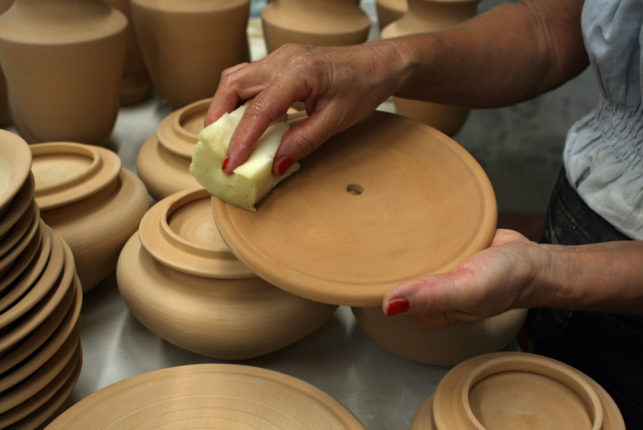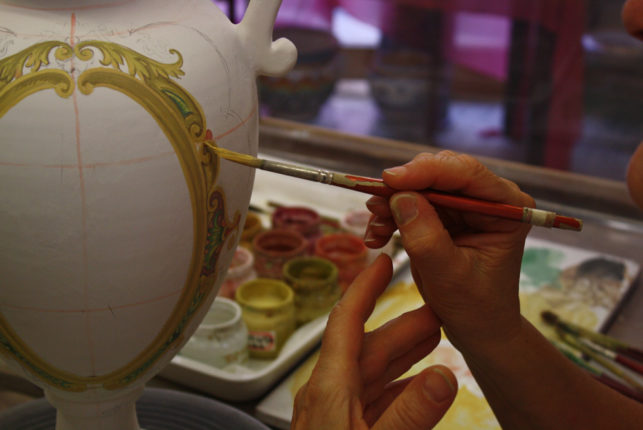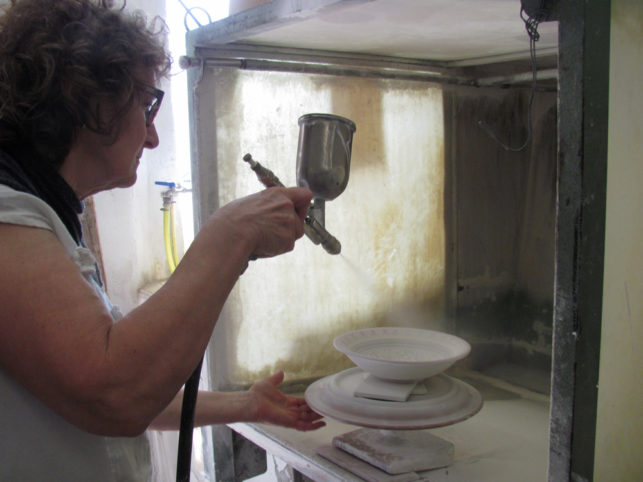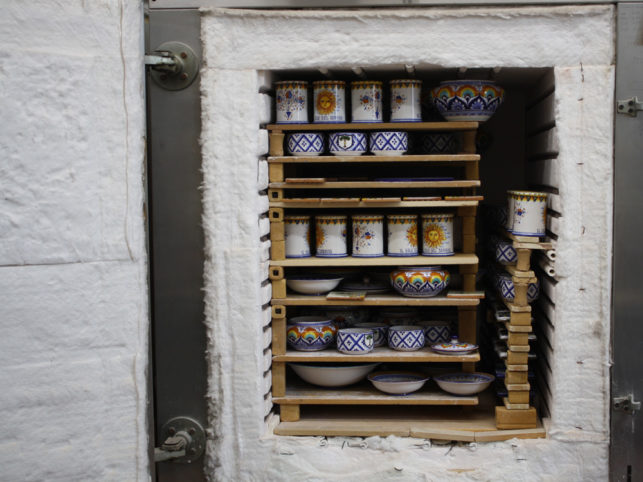The Majolica Technique from Faenza
The majolica technique is very old and has been practised in Faenza since the Renaissance period. The methods and materials are basically the same of that time, so that every object made today carries with it centuries of tradition.
The technique can be summarized in these phases:
- Manufacturing of the shape in clay and first firing to obtain the biscuit
- Application of majolica (background white glaze) by immersion or sprinkling
- Designing and making of spolvero
- Decoration by brush
- Spraying of crystalline
- Second firing “a Gran Fuoco”
Manufaturing of the shape and first firing
The land around Faenza is rich in clay, a material particularly malleable and suitable for creating very complex shapes.
The artefact in clay, threw on the wheel or made by a mold, is dried and then fired at 980°C to obtain the terracotta which we call biscotto (biscuit).

Application of majolica
The peculiarity of the ceramics of Faenza is the majolica, a vitreous glaze that thanks to the presence of tin oxide, becomes very white and shiny with the high-temperature firing.
The terracotta object is covered with majolica by immersion or sprinkling. At this stage the glazed object is very delicate because the surface is dusty and volatile.
Designing and making of the “spolvero”
The majolica technique of Faenza is characterized by the extreme precision of the decoration, and the richness of its designs. For this reason, “free-hand” decoration is rarely performed.
For most of the traditional decorations you need to prepare a spolvero, a trace to follow with the brush. The decorative pattern is drawn on transparent paper, and then pierced with a thin needle. This spolvero is accurately positioned on the glazed object and passed over with charcoal powder that leaves a trace that we can follow with the brush. The carbon residues disappear during cooking.
Decoration by brush
The colors used for decoration are oxides of metals or minerals, and are diluted with water. Some of these colors change with high temperature: the “Blue Faenza”, for example, is violet before firing.
The strokes must be fresh, but very precise: it is almost impossible to correct mistakes.

The decorator accurately follows the track of choal and draws the contours with very fine brushes. After, he fills the colored areas, layer after layer.
A major difficulty is to understand the proper dilution of the colours and the correct thickness to be laid.
Spraying of crystalline glaze
The decorated object is coated by spraying with crystalline, a transparent glassy substance which melts during firing, resulting in the typical brightess of Faenza’s ceramics.

Second firing “a Gran Fuoco”
The kiln is carefully prepared: the glaze or the crystalline must not touch the walls or the base, otherwise the object would stick.
Firing is at about 930° C and the temperature has to increase and decrease very slowly. It takes about 12 hours to reach the temperature, and 12 hours to cool the kiln and be allowed to open it.

A ceramic made in this way is a valuable and durable object: the decoration will remain bright forever, as evidenced by the ceramics on display at the International Museum of Ceramics in Faenza.



